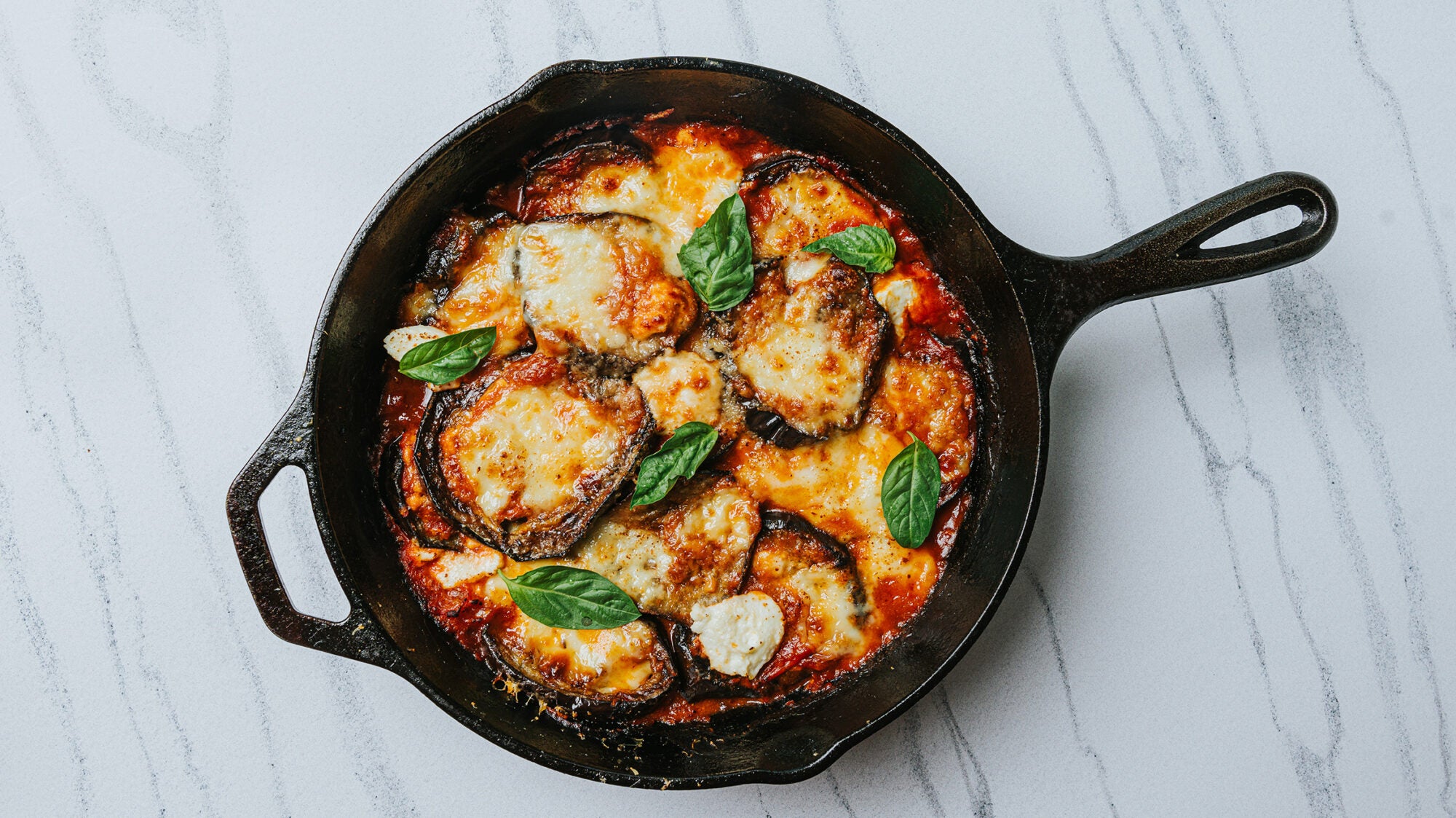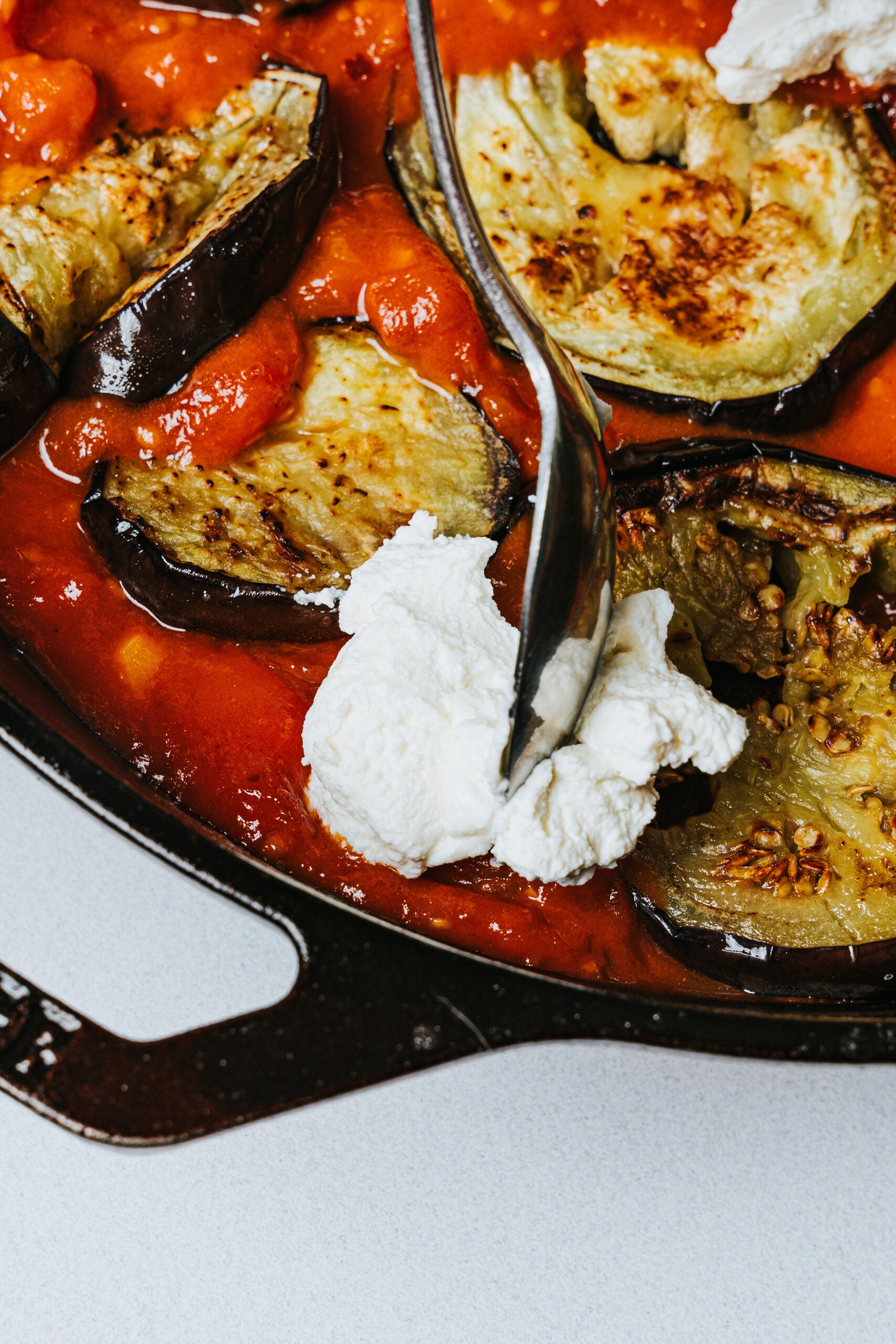
This simple one-skillet rendition proves that rules were made to be broken
The silver lining of autumn weather? It’s finally bearable to turn on the oven. Eggplant parmesan is an ideal dish for this transitional time, as it’s cozy and comforting while making use of end-of-summer ingredients. I typically make it in the Italian style, which skips the bread crumbs for a simpler preparation than the Italian American version, but it’s still a labor-intensive dish—the eggplants are peeled, sliced, and salted to remove excess moisture, then shallow-fried until soft and tender. All those steps mean that I usually only make this dish once a year, but since eggplant parm is a yearlong craving, I wanted to develop a weeknight-friendly version. It turns out that a simpler, one-skillet version is possible, as long as you’re willing to break a few “rules” along the way.
I start by cutting the eggplant into thick rounds and pan-frying them in a cast iron skillet until they’re tender and golden brown. Conventional culinary wisdom instructs salting the eggplant slices and letting them sit to draw out excess moisture before cooking, reducing the amount of oil absorbed during the cooking process. But a side-by-side taste test proved this extra step to be unnecessary—in fact, most of my testers couldn’t discern much difference at all in flavor or texture. And pan-frying the eggplant in a minimal amount of oil means there’s no risk of it becoming too greasy. Skipping this step doesn’t just save time, it also saves space and dishes, since there’s no need for an extra pan to lay the eggplant on while salting.

After the eggplant is cooked, I remove it from the pan to build a simple tomato sauce in the same skillet (and yes, my cast iron skillet and I are still alive to tell the tale). I let the sauce rapidly bubble for 10 minutes or so, until it’s just thickened, then nestle the eggplant slices back into the saucy pan—a technique I picked up from Kathy Brennan and Caroline Campion’s Skillet Lasagna recipe, which simplifies the layering process. Finally, I add on three kinds of cheese—nontraditional dollops of creamy ricotta to cut through the acidity, slices of mozzarella, and a small mountain of Parmesan—before baking until golden and bubbling. The result is a dish that very closely resembles my once-a-year eggplant parmesan, but I’ll be enjoying this version all year long.